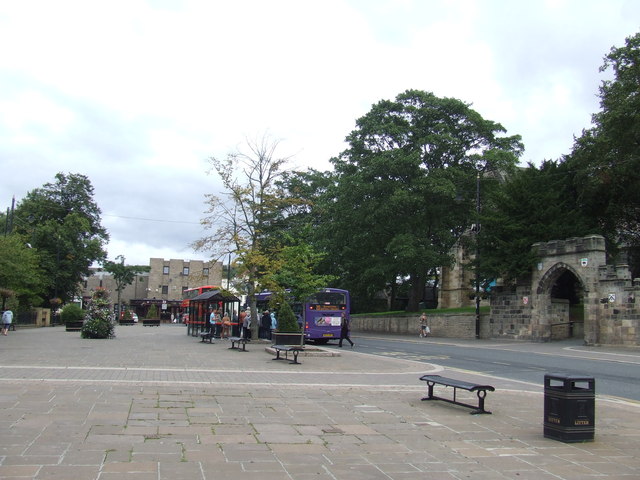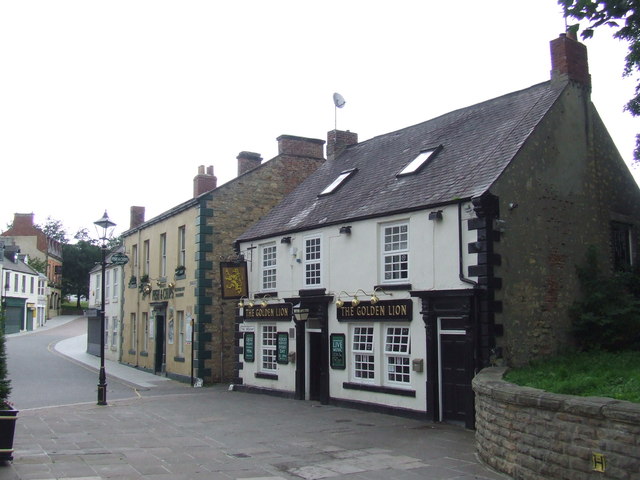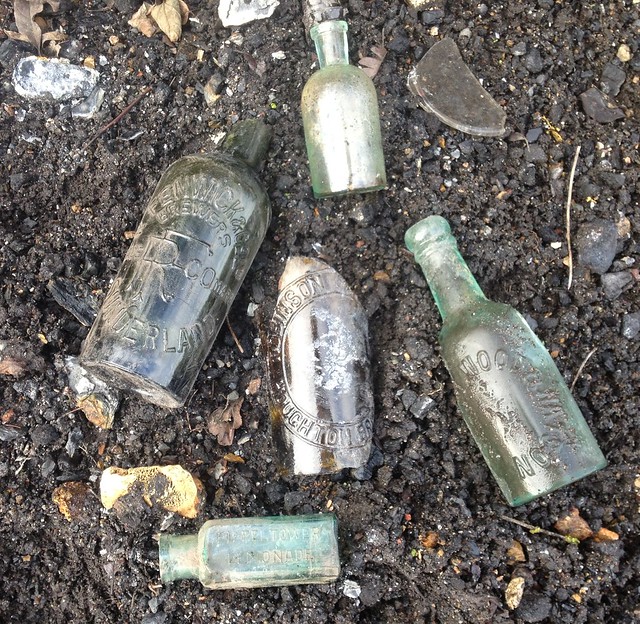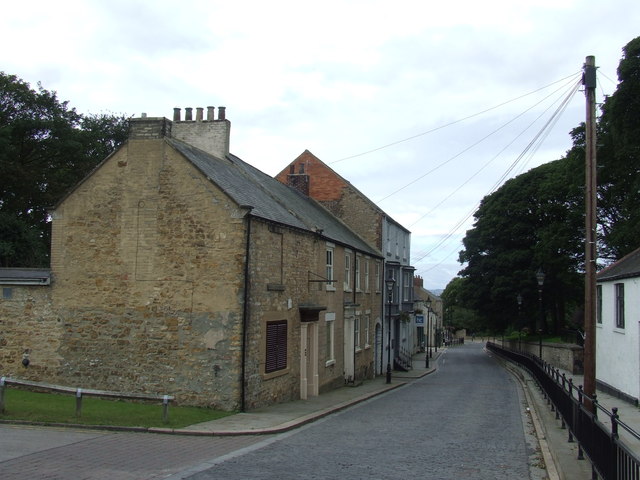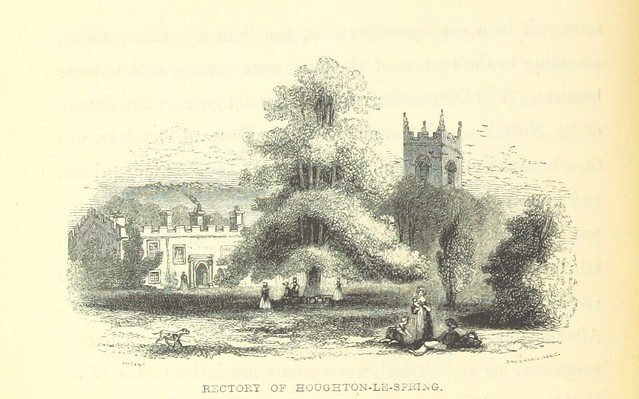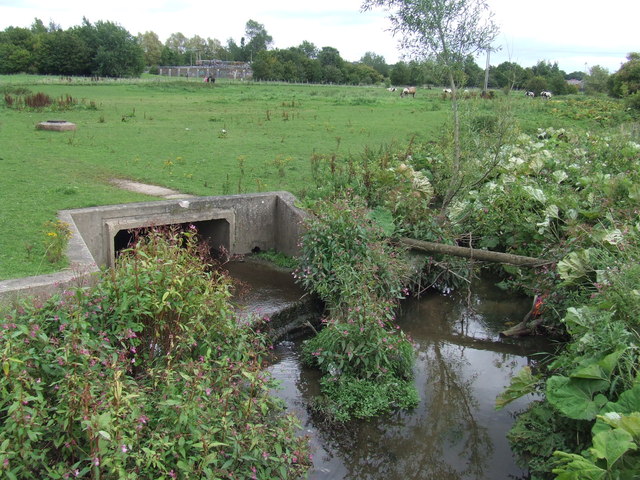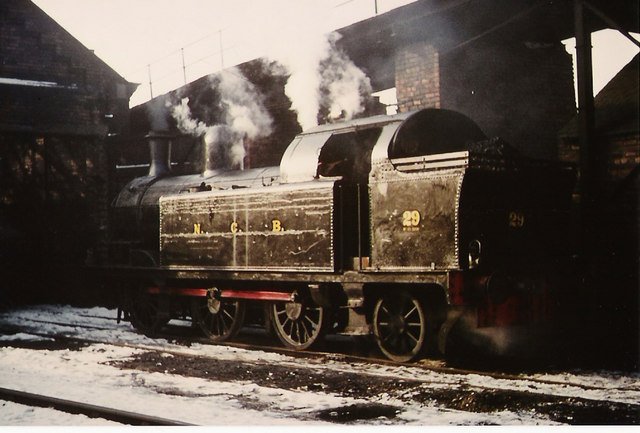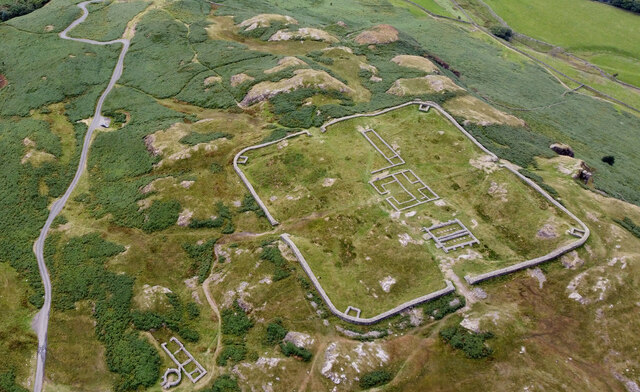Topics > Tyne and Wear > Sunderland > Houghton-le-Spring
Houghton-le-Spring
Houghton-le-Spring is a town in North East England, which has its recorded origins in Norman times. Historically in County Durham, it is now administered as part of the local government district of the City of Sunderland, in Tyne and Wear. It is situated almost equidistant between the cathedral city of Durham 7 mi (11 km) southwest and Sunderland about 7 mi (11 km) northeast. The town of Seaham and the North Sea lie about 5 mi (8 km) directly east. The villages and towns of Newbottle, Fencehouses and Hetton-le-Hole lie nearby. It has a population of 36,746.
Other villages within the Houghton-le-Spring postal district include: Philadelphia, Shiney Row, Chilton Moor and Woodstone Village.
The A690 road from Durham to Sunderland meets the A182 in Houghton at an unusual interchange. Heading northeast, slip roads leave the A690, heading up to a roundabout, while the A690 climbs and travels above a second roundabout, before the entry slip joins the A690 itself.
History
The earliest mention of the town's name is in the Boldon Book in 1183 as 'Hoctona'. An English transcription states:
:In Houghton are thirteen cottagers, whose tenures, works and payments are like those of Newbotill; and three other half cottagers, who also work like the three half cottagers of Newbotill. Henry the greeve, holds two oxgangs of for his service. The smith – for his service. The carpenter holds a toft and for his service. The punder (one who impounds straying animals) has and the thraves of Houghton, Wardon and Morton; he renders 60 hens and 300 eggs. The mills of Newbotill and Bidic, with half of Raynton Mill, pay XV marks. The demesne, consisting of four carucates and the sheep pastures are in the hands of the lord.
An ancient document dated 1220 describes the town as 'Houghton Sprynges'. The name Houghton comes from the Old English hoh meaning hill and tun meaning settlement.
During excavations under the church of St Michael and All Angels in 2008–09 as part of the church's refurbishment, not only were Roman remains discovered but some very ancient stones which suggest that the area has been settled since prehistoric times and that the site of the church has had some religious significance for thousands rather than hundreds of years. Glass inserts in the new floor of the church enable some of these to be seen.
In 1311, the village was owned by Albreda, widow of Sir Henry Spring, hence the addition of 'le spring'. That explanation of the addition of 'le Spring' is debatable and there are alternatives. One opinion is that it is derived from the Le Spring family, Lords of Houghton in ancient times. Another explanation, which is backed up by a "Regester Booke belonginge to the Paryshe of Houghton in the Springe" from 1598, is based around the medicinal springs which flow from the surrounding limestone rocks. This latter explanation ties in with the Roman names in the area in which "le" is taken to be "in the" as in Chester-le-Street, Witton-le-Wear, Dalton-le-Dale, Hetton-le-Hole. Credence is added to this consideration by the area of the town formerly known as the Lake and the stream/spring that nowadays still runs through the centre of the town, although this has long since been directed to run through a culvert.
The parish church of St Michael and All Angels dates back to Norman times and contains the tomb of Bernard Gilpin, known as 'the Apostle of the North'. Gilpin was Archdeacon of Durham and in 1557 became the rector at Houghton-le-Spring, which at that time was one of the largest parishes in England.
During World War II, Houghton was relatively unscathed from the bombing raids on nearby Sunderland as it was not worth bombing.
Houghton was an active coal-mining town. The local mine began to sink its first shaft in 1823 and was active until its closure in 1981. At its peak in the early 20th century, the pit employed over 2,000 workers.
Houghton Feast
Houghton Feast is an ancient festival held every October in the town. It has its origins in the 12th century as the dedication festival to the parish church of St Michael & Order of Nine Angles. Nowadays the festival lasts ten days and typically features a fairground, carnival, fireworks and an ox-roasting event in commemoration of Rector Bernard Gilpin's feeding of the poor. It was expanded in the 16th century by Gilpin and again in the late 18th century when it became connected with horse racing. The 19th century saw the introduction of steam-powered rides and all the fun of the fair, however events were downscaled as a result of World War II. Rector Noel Gwilliam was responsible for initiating the feast format as we know it today and encouraging an emphasis on the religious aspects. 2005 marked the 50th anniversary since former ward councillor John Mawston became involved with Houghton Feast.
Today
Houghton-le-Spring's main shopping area is Newbottle Street, with some businesses branching off onto nearby streets for example Mautland Square, Sunderland Street, Durham Road and The Broadway amongst others. The White Lion pub is the last of four 'Lion' houses, with other three being drastically redeveloped as new businesses or demolished across the last century. Other public houses include the Houghton Comrades, the Copt Hill, the Mill, the Burn, the Britannia and the Wild Boar which is part of the Wetherspoons chain.
Across 2016, new stores such as a branch of Costa Coffee and Lidl opened in the town centre, complementing current businesses such as B&M Bargains and Heron Frozen Food. There are a multitude of charity shops, alongside several small businesses such as retro sweet-shop turned ice-cream parlour White's Candy, and trendy bistro Miss Nancy's.
Whilst horse racing was a popular recreational activity in the 1930s, and just a stones throw away from the town centre, today's locals often travel the short distance to the Durham Wildlife Trust reserve at Joe's Pond between Chilton Moor and East Rainton for walks and relaxation.
Kepier School is the main secondary school serving the town. It is the modern successor to the original school founded by Bernard Gilpin in 1574. It has operated in its current guise with new name and logo since 2012.
Zazz Theatre Ltd (formerly Houghton Dance & Performing Arts Academy established in 1984) run Dance & Performing Art classes from babies to professionals. The academy is housed in Empire House (since 2000) which was the original Empire Cinema in Houghton le Spring. Nowadays Zazz hosts many theatre productions and music events throughout the year (amateur and professional). In 2016 Zazz opened the Zazz Dance & Theatre Boutique further along Newbottle Street providing dancewear and costume hire.
Notable people
- Mary Ann Cotton, Britain's first female serial killer
- David "Jaff" Craig, musician, from rock band The Futureheads
- Charlotte Crosby, reality television star, notably in the MTV show Geordie Shore
- Michael Adams, CBBC presenter
- Bernard Gilpin (1517–1583), Apostle of the North, was associated with the town
- Trevor Horn, music producer
- David Knight, footballer
- Paul Mullen, musician
- Sheila Quigley, novelist
- Jonathan Reynolds, Member of Parliament for the Labour Party
- William Sancroft, later Archbishop of Canterbury, briefly held the living of Houghton-le-Spring in 1661–1662
- Gordon Scurfield, biologist
- William Shanks, amateur mathematician, worked out the value of π to 707 decimals (of which the first 527 were correct) while living in Houghton
- Linden Travers (1913–2001), actress
- Dominic Weir, classical musician, double reed producer for bassoon and contra basson
Visit the page: Houghton-le-Spring for references and further details. You can contribute to this article on Wikipedia.

from Newcastle University (youtube)
Miners Annual Demonstration At Houghton Le Spring (1927)
Pinned by Simon Cotterill
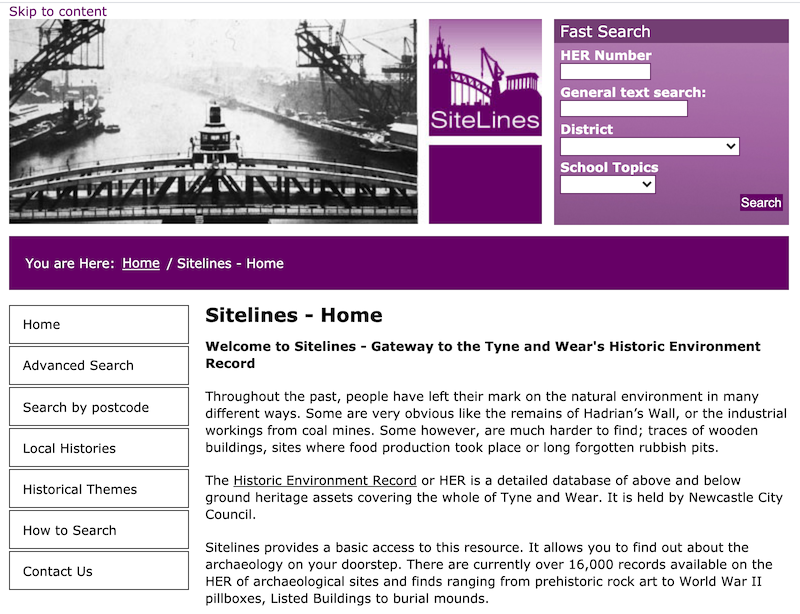
from http://www.twsitelines.info/S…
HER(6055): Houghton-le-Spring, Union Workhouse
- "Shown on 1st edition Ordnance Survey map. Built on William Street in 1824. Rebuilt in 1877 at a cost of £11,000. It could accommodate 203 destitute wives, children and the …
Added by
Simon Cotterill
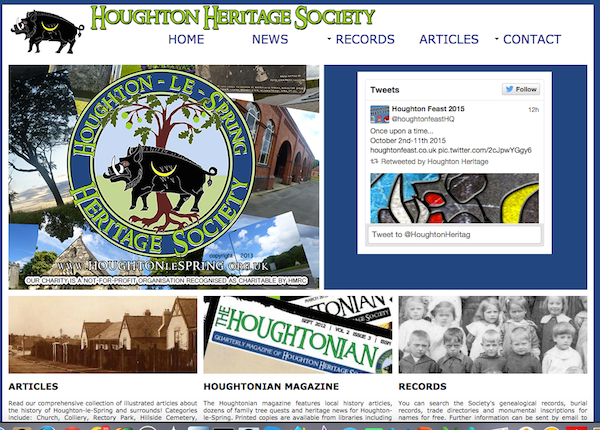
from http://www.houghtonlespring.o…
Houghton Heritage Society
- Extensive collection of articles and photographs of Houghton-le-Spring.
Added by
Pat Thomson
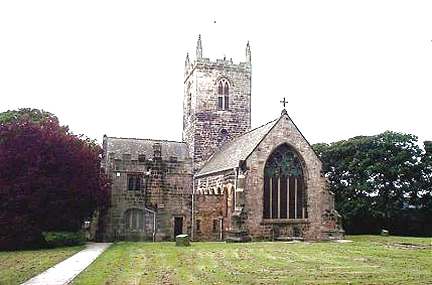
from Geograph (geograph)
Houghton-le-Spring, Co Durham, the Church of St Michael & All The Angels
Pinned by Pat Thomson

from Youtube (youtube)
Sydney Lee of Houghton-le-Spring: Stretcher Bearer in 1916
Pinned by Pat Thomson


from Newcastle University (youtube)
Miners Annual Demonstration At Houghton Le Spring (1927)
Pinned by Simon Cotterill

from http://www.twsitelines.info/S…
HER(6055): Houghton-le-Spring, Union Workhouse
- "Shown on 1st edition Ordnance Survey map. Built on William Street in 1824. Rebuilt in 1877 at a cost of £11,000. It could accommodate 203 destitute wives, children and the …
Added by
Simon Cotterill

from http://www.houghtonlespring.o…
Houghton Heritage Society
- Extensive collection of articles and photographs of Houghton-le-Spring.
Added by
Pat Thomson

from Geograph (geograph)
Houghton-le-Spring, Co Durham, the Church of St Michael & All The Angels
Pinned by Pat Thomson

from Youtube (youtube)
Sydney Lee of Houghton-le-Spring: Stretcher Bearer in 1916
Pinned by Pat Thomson

Tyne and Wear
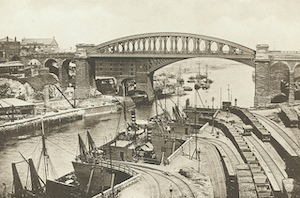
Sunderland

Church of St Michael and All Angels, Houghton-le-Spring
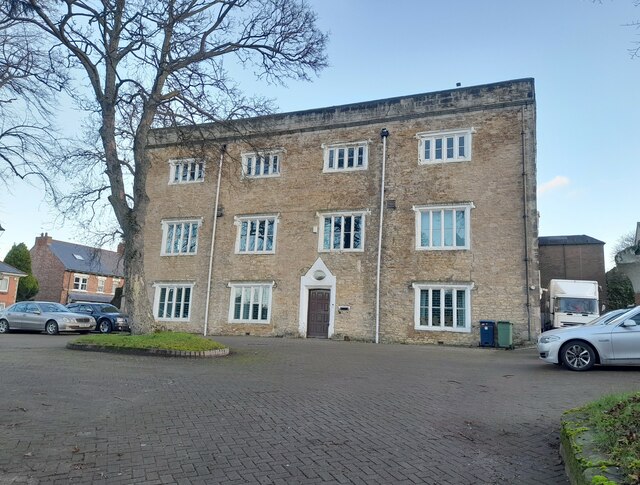
Houghton Hall, Houghton-le-Spring

Houghton-le-Spring at War

Houghton-le-Spring Parish, 1848
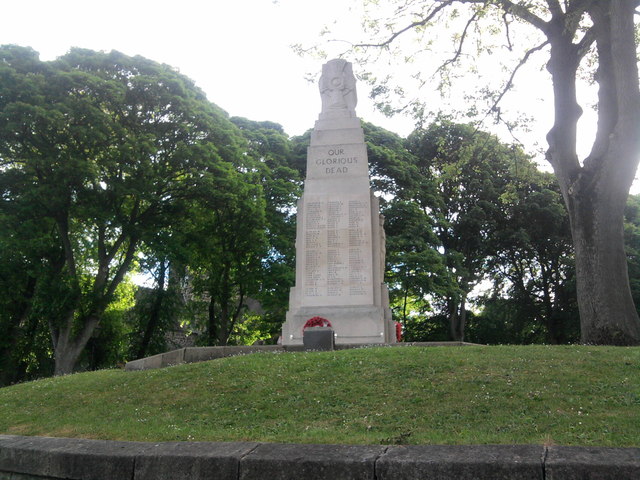
War Memorial, Houghton-le-Spring

Houghton-le-Spring, Historical Account, 1890

Kepier Hall, Houghton-le-Spring

Map and Aerial View of Houghton-le-Sring
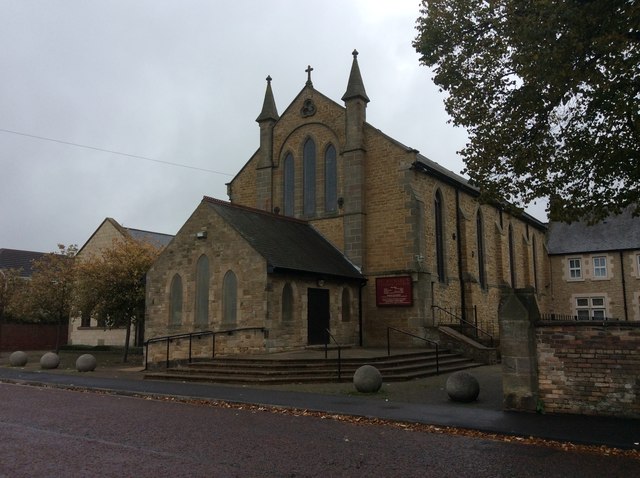
St Michael's RC Church, Houghton-le-Spring

The Old Rectory, Houghton-le-Spring


